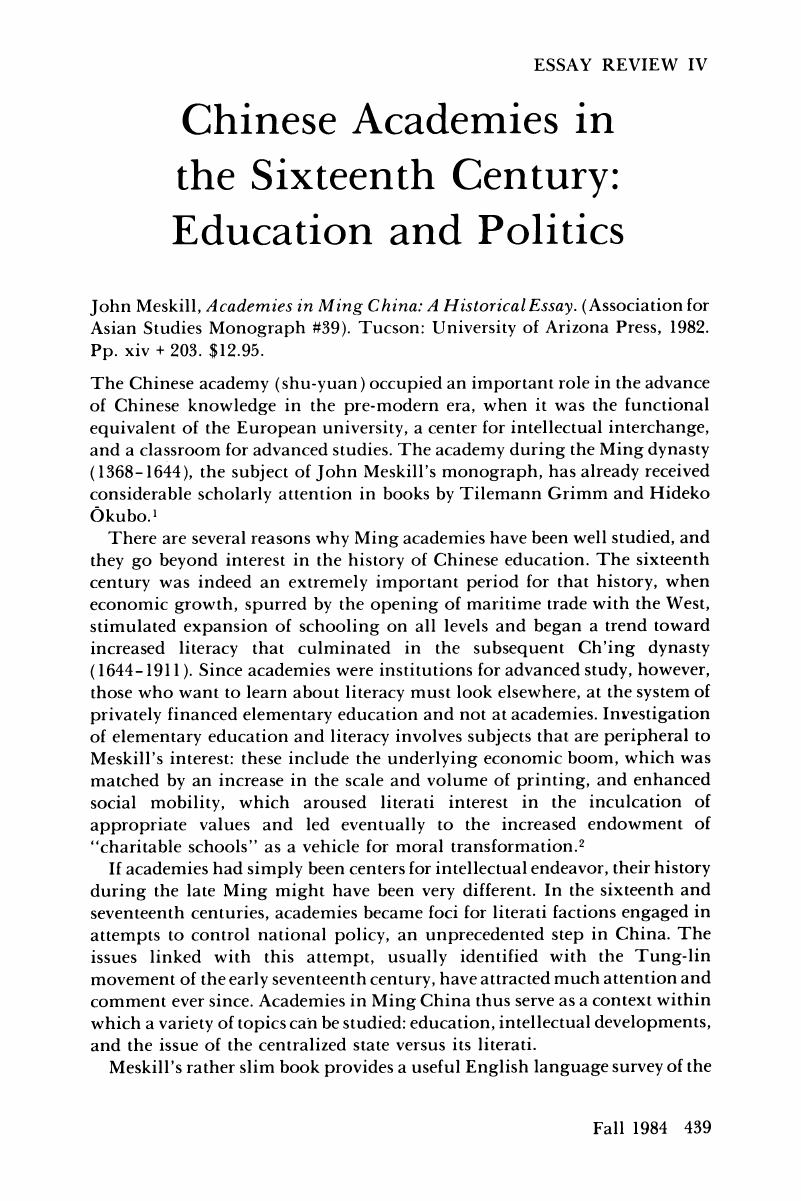No CrossRef data available.
Published online by Cambridge University Press: 24 February 2017

1. Grimm, Tilemann, Erziehung und Politik im konfuzianischen China der Ming-Zeit (1368–1644). Mitteilungen der Gesellschaft für Natur- Und Volkerkunde Ostasiens 35. (Hamburg, W., 1960); Ωkubo, Hideko, Min Shin jidai shoin no kenkyū (Academies in the Ming and Ch'ing eras) (Tokyo, 1976).Google Scholar
2. Rawski, Evelyn S., Education and Popular Literacy in Ch'ing China (Ann Arbor, 1979).Google Scholar
3. Igarashi, Masakazu, Chūgoku kinsei kyωikushi kenkyū (The history of modern Chinese education) (Tokyo, 1979) deals extensively with the official school system of the Ming dynasty.Google Scholar
4. Berling, Judith, “Religion and Popular Culture: The Management of Moral Capital in the Romance of the Three Teachings ,” in Popular Culture in Late Imperial China: Diversity and Integration, ed. Johnson, David, Nathan, Andrew, and Rawski, Evelyn S. (Berkeley, forthcoming).Google Scholar
5. Rawski, E. S., “Economic and Social Foundations of Ming and Ch'ing Culture,” in Popular Culture in Late Imperial China.Google Scholar
6. Wakeman, Frederic Jr., “The Price of Autonomy: Intellectuals in Ming and Ch'ing Politics,” Daedalus 101.2(1972):35–70.Google Scholar
7. Two slightly different interpretations of the Tung-lin movement may be obtained by looking at Hucker, Charles O., “The Tung-lin Movement of the Late Ming Period,” in Chinese Thought and Institutions, ed. Fairbank, John K. (Chicago, 1957), pp. 132–62, and Dennerline, Jerry, The Chia-ting Loyalists: Confucian Leadership and Social Change in Seventeenth-Century China (New Haven, 1981), chap. 1.Google Scholar
8. Peterson, Willard, Bitter Gourd: Fang I-chih and the Impetus for Intellectual Change (New Haven, 1979).Google Scholar
9. Elman, Benjamin A., “The Unravelling of Neo-Confucianism: The Lower Yangtze Academic Community in Late Imperial China,” Ph.D. thesis, Oriental Studies, University of Pennsylvania, 1980.Google Scholar